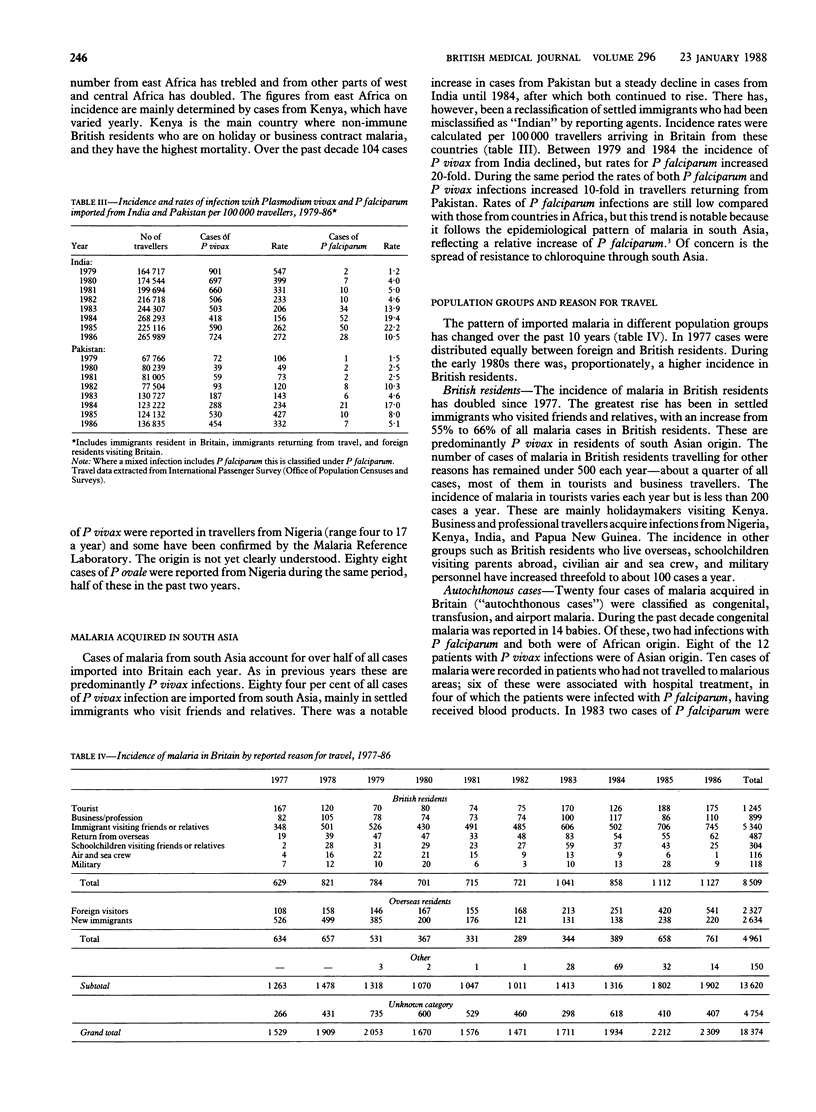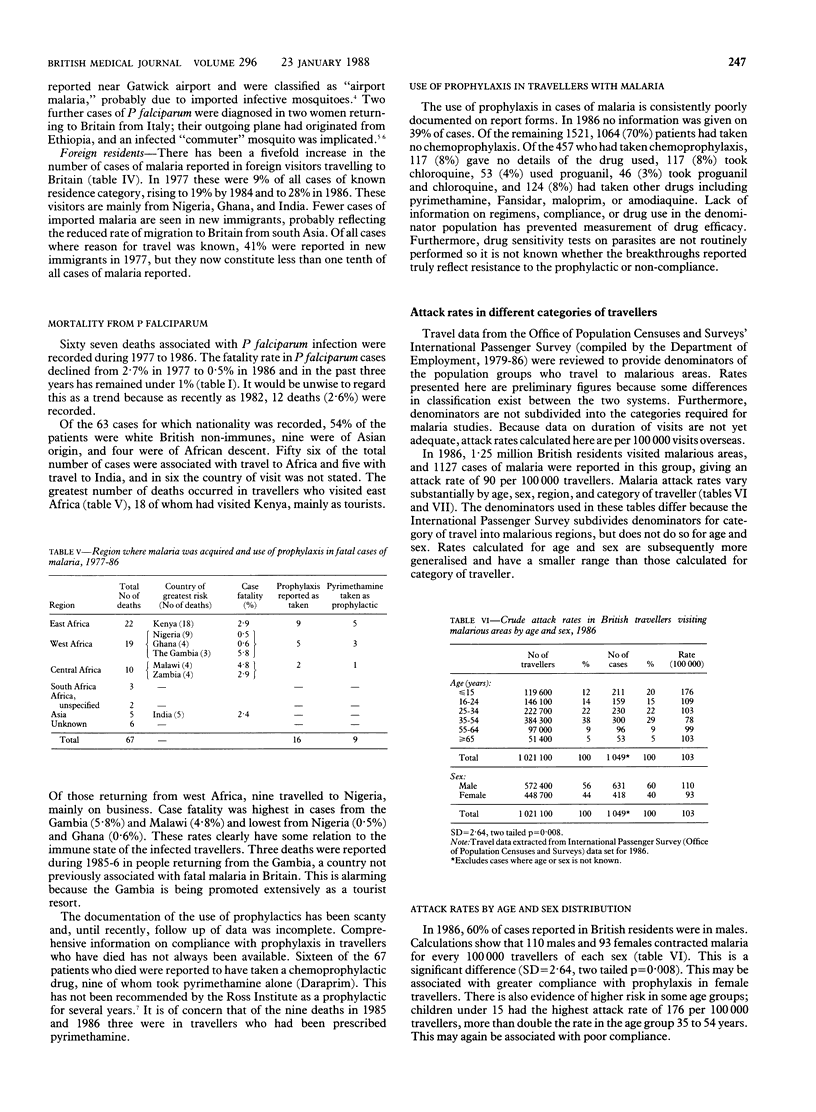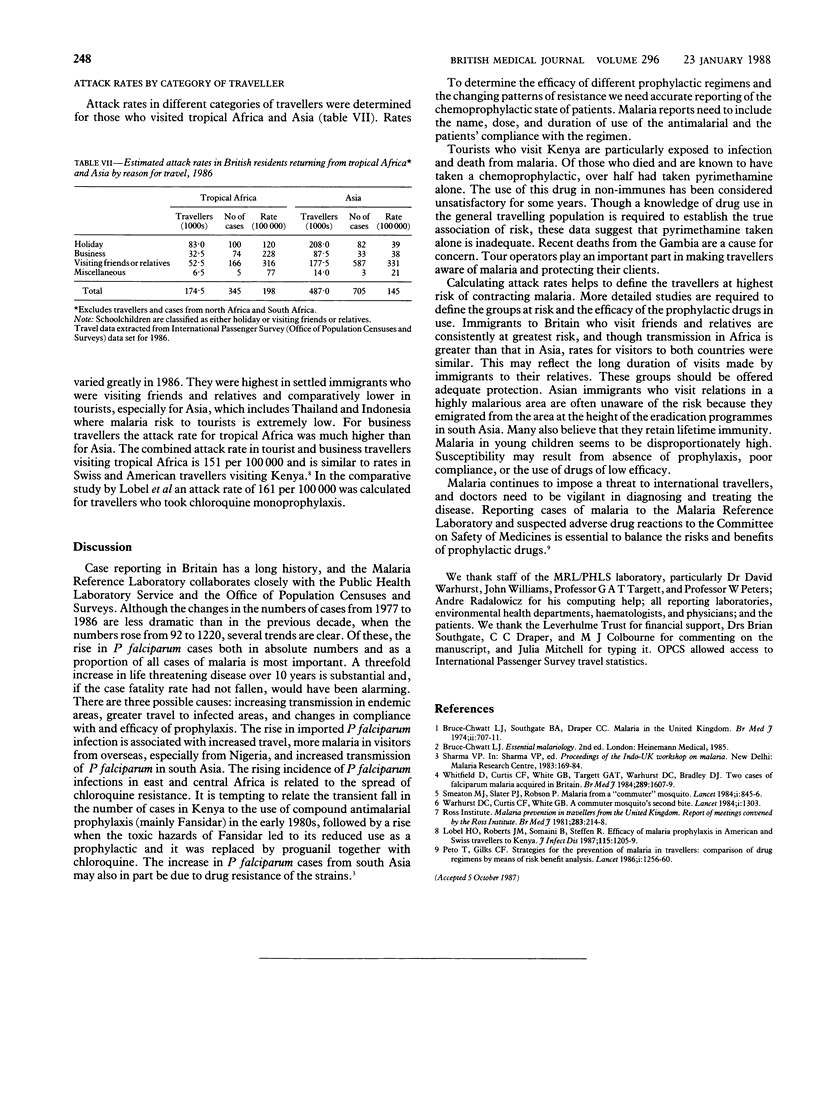Abstract
The incidence of malaria in Britain as reported to the Malaria Reference Laboratory during the past decade has increased by 51%, from 1529 to 2309 cases, and infection with Plasmodium falciparum has increased from one fifth to one third of all cases. The case fatality rate for P falciparum infections declined from 2·7% to 0·5%. Of the 67 persons who died, 54 were of British origin, nine of Asian descent, and four African. Sixteen had taken chemoprophylaxis; of these, nine had taken pyrimethamine alone.
The pattern of infection shows that resident ethnic minority groups, temporary residents from west Africa, and tourists who visit Kenya are particularly at high risk. The calculated attack rates suggest that men, children, and young adults are at greater risk of malaria than women and older people. Rates are highest in immigrants who have settled in Britain who visit relatives: 316 and 331 per 100 000 for Africa and Asia respectively, 120 and 39 in tourists to those same regions, and 228 and 38 in business travellers to those regions.
Full text
PDF



Selected References
These references are in PubMed. This may not be the complete list of references from this article.
- Bruce-Chwatt L. J., Southgate B. A., Draper C. C. Malaria in the United Kingdom. Br Med J. 1974 Jun 29;2(5921):707–711. doi: 10.1136/bmj.2.5921.707. [DOI] [PMC free article] [PubMed] [Google Scholar]
- Lobel H. O., Roberts J. M., Somaini B., Steffen R. Efficacy of malaria prophylaxis in American and Swiss travelers to Kenya. J Infect Dis. 1987 Jun;155(6):1205–1209. doi: 10.1093/infdis/155.6.1205. [DOI] [PubMed] [Google Scholar]
- Peto T. E., Gilks C. F. Strategies for the prevention of malaria in travellers: comparison of drug regimens by means of risk-benefit analysis. Lancet. 1986 May 31;1(8492):1256–1261. doi: 10.1016/s0140-6736(86)91395-4. [DOI] [PubMed] [Google Scholar]
- Smeaton M. J., Slater P. J., Robson P. Malaria from a "commuter" mosquito. Lancet. 1984 Apr 14;1(8381):845–846. doi: 10.1016/s0140-6736(84)92288-8. [DOI] [PubMed] [Google Scholar]
- Warhurst D. C., Curtis C. F., White G. B. A commuter mosquito's second bite? Lancet. 1984 Jun 9;1(8389):1303–1303. doi: 10.1016/s0140-6736(84)92491-7. [DOI] [PubMed] [Google Scholar]
- Whitfield D., Curtis C. F., White G. B., Targett G. A., Warhurst D. C., Bradley D. J. Two cases of falciparum malaria acquired in Britain. Br Med J (Clin Res Ed) 1984 Dec 8;289(6458):1607–1609. doi: 10.1136/bmj.289.6458.1607. [DOI] [PMC free article] [PubMed] [Google Scholar]


